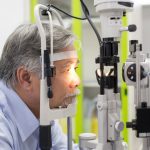
Exploring Europe, taking an African safari, going on a trip to the tropics: In many cases, vaccines are needed for travel, and that’s doubly true for children. According to pediatrician Dr. Lauren Nguyen, researching what vaccines are needed and preparing well before your family’s departure is crucial. “I tell my families that it’s best to come in about six weeks prior to international travel,” said Nguyen, who’s based in Torrance, Calif. and is affiliated with the Children’s Hospital Los Angeles Care Network. Meet with your child’s pediatrician to review travel plans, figure out what vaccines are required or recommended based on your travel destination and arrange to get any shots needed. That consultation is probably best done with an in-person visit, not a phone call, Nguyen noted. Not sure what shots the country you’re visiting requires? Head to the U.S. Centers for Disease Control and Prevention’s Travelers’ Health website for up to date info for countries worldwide. “The CDC website tells you about any current outbreaks, as well as the recommended vaccines for that country,” Nguyen said in a hospital news release. Besides any special vaccines required by the country you’re visiting, make sure your child is up to date on routine shots for seasonal infections like COVID, flu and RSV. Planning ahead is crucial because many vaccines require multiple doses given weeks apart, Nguyen noted.… read on > read on >


















